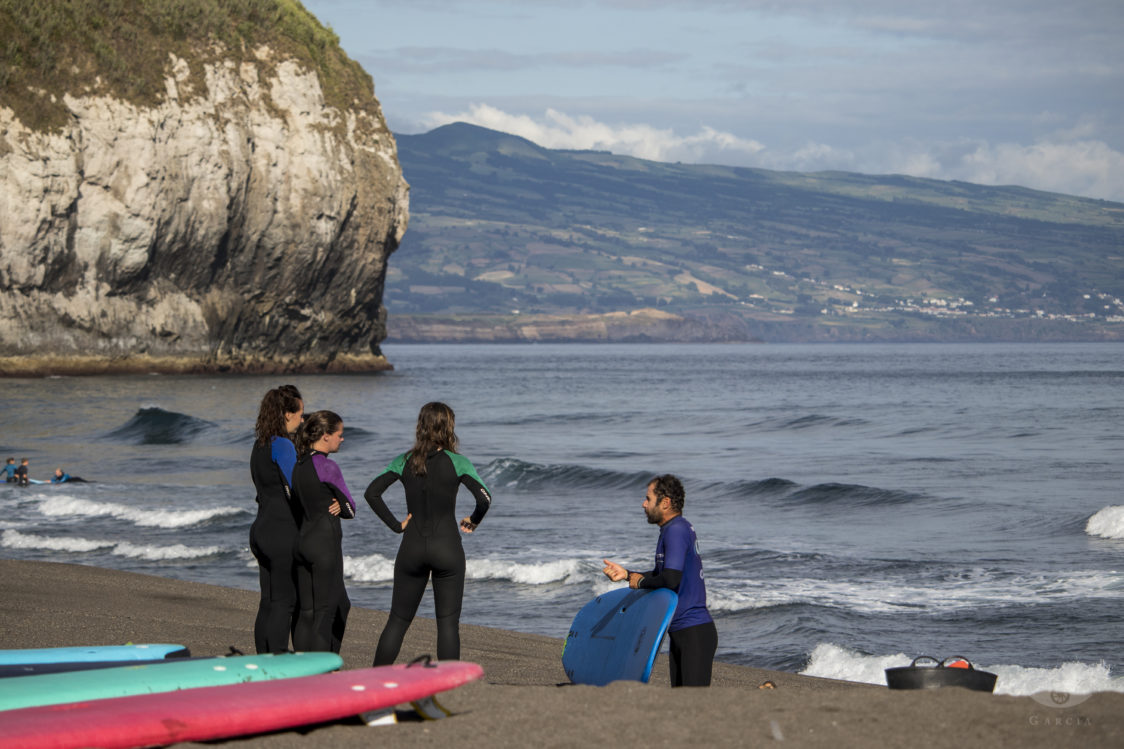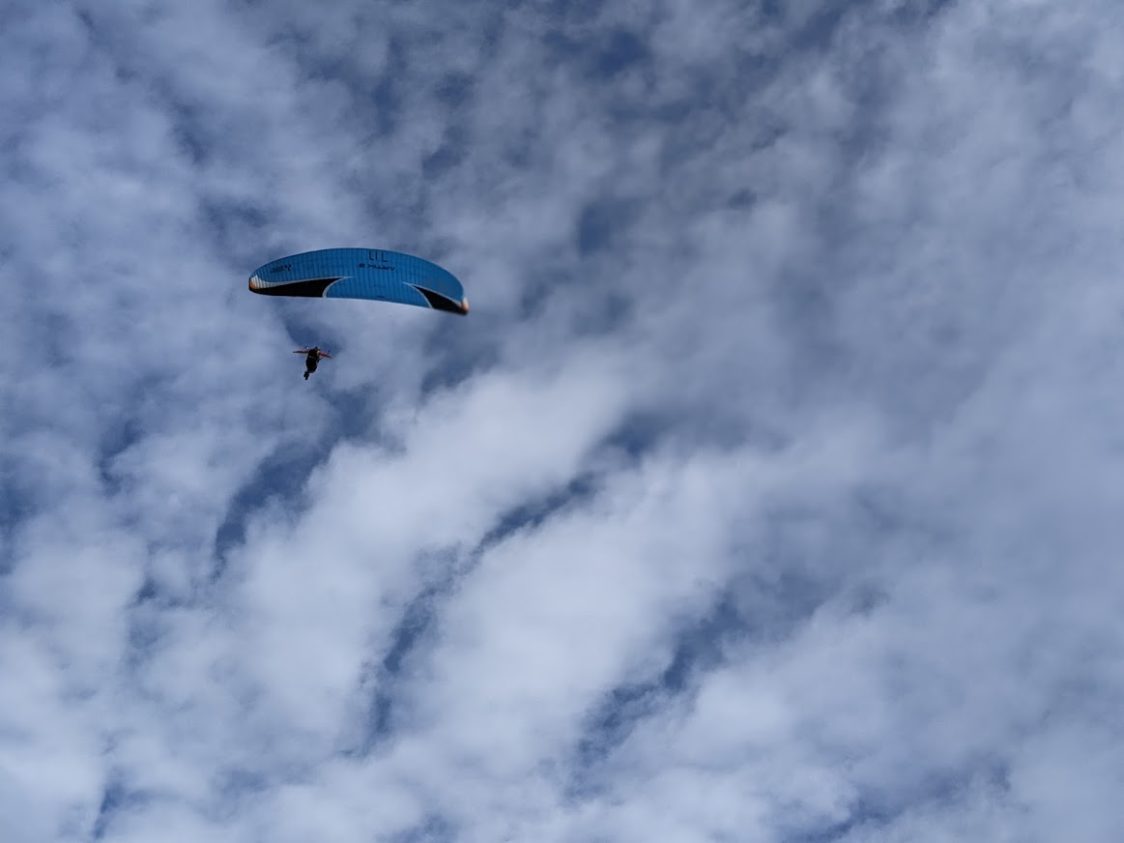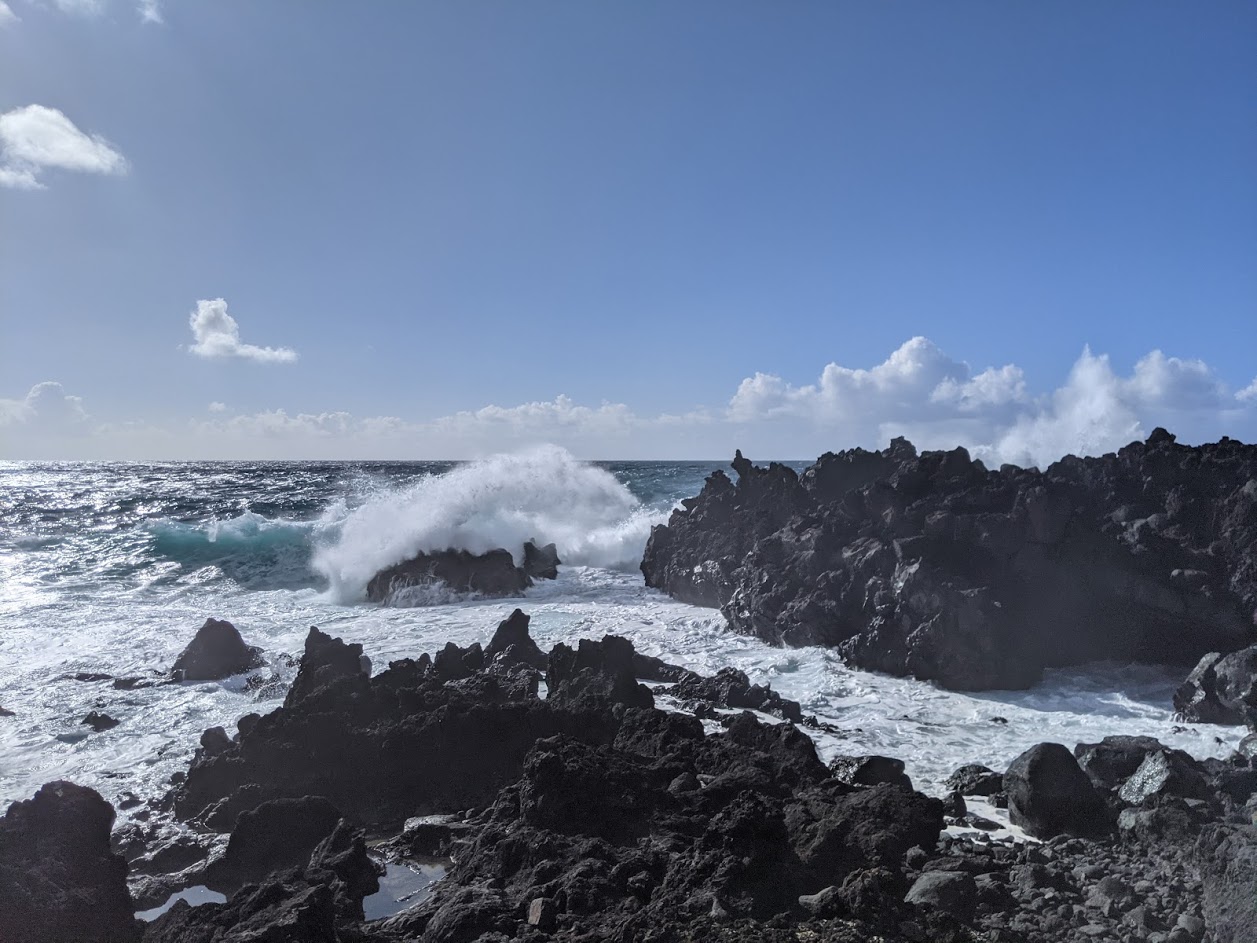Our top 5 watery adventures on the island of Sao Miguel
Sao Miguel, Azores
Portugal
The islands of the Azores are often referred to as the “Hawaii of the Atlantic” and for good reason. With an average annual rainfall of 35 inches the islands are green year-round and possess an abundance of crater lakes, rivers, streams, waterfalls, thermal springs and pristine beaches.
A car and a map combined with a sense of adventure gave us access to lava encrusted beaches with waves so powerful they shook the earth, a hike along a 5 kilometer levada (water channel) that was straight out of an Indiana Jones movie and numerous waterfalls ranging in size from a string of pearls to raging 100 foot torrents.
Our year-long stay on Ilha Verde…or the Green Island rewarded us with plenty of time and endless opportunities to explore the many watery wonders.
Here are our top 5 watery adventures on the island of Sao Miguel.
Furnas Village l The Hydropolis of the World l 37.7761° N, 25.3104° W
The village of Furnas and the surrounding area can easily lay claim to being one of the most beautiful locations on the island of Sao Miguel. The verdant volcanic landscape, friendly low key vibe and the easygoing pace of life make for a wonderful stay, no matter the time of year.
Among its many natural and man made attributes it is water that defines Furnas, which is known as the the “Hydropolis of the World”. Home to 32 diverse mineral springs, including hot springs, medicinal springs and natural sparkling water springs the diversity of water here is simply astonishing.
In addition to the various springs the area is scattered with geysers, fumaroles, and bubbling caldeiras, some of which are used to cook the local specialty called cozido. Like most geysers, the ones in and around Furnas give off wafts of noxious sulfur gas that take control of your sense of smell. While this may be a bad thing for your olfactory system it is especially good when bathing in the therapeutic waters of the local hot springs.
One particularly interesting aspect of this watery village are the 20 fresh water fountains. In the not-to-distant past the fountains served a very important role in the daily life of the locals as there were no tap water sources in many peoples homes. The majority of these fountains are still in service, providing locals and travellers alike with cool, fresh water.
Along with the fresh water fountains there are several agua azeda’s, or “sour water” fountains dispensing warm to scalding hot, therapeutic water. These fountains are believed to have various medicinal properties helping in everything from eye allergies and skin disorders to the facilitation of healthy digestion.
Our time spent in Furnas exposed us to the many wonders of the unique relationship between man and nature. The numerous man-made channels, fountains and water wheels that control and direct water would have a Dutchman nodding in approval.
Of course none of this abundance of water would be possible without rain.
Lots and lots of rain!
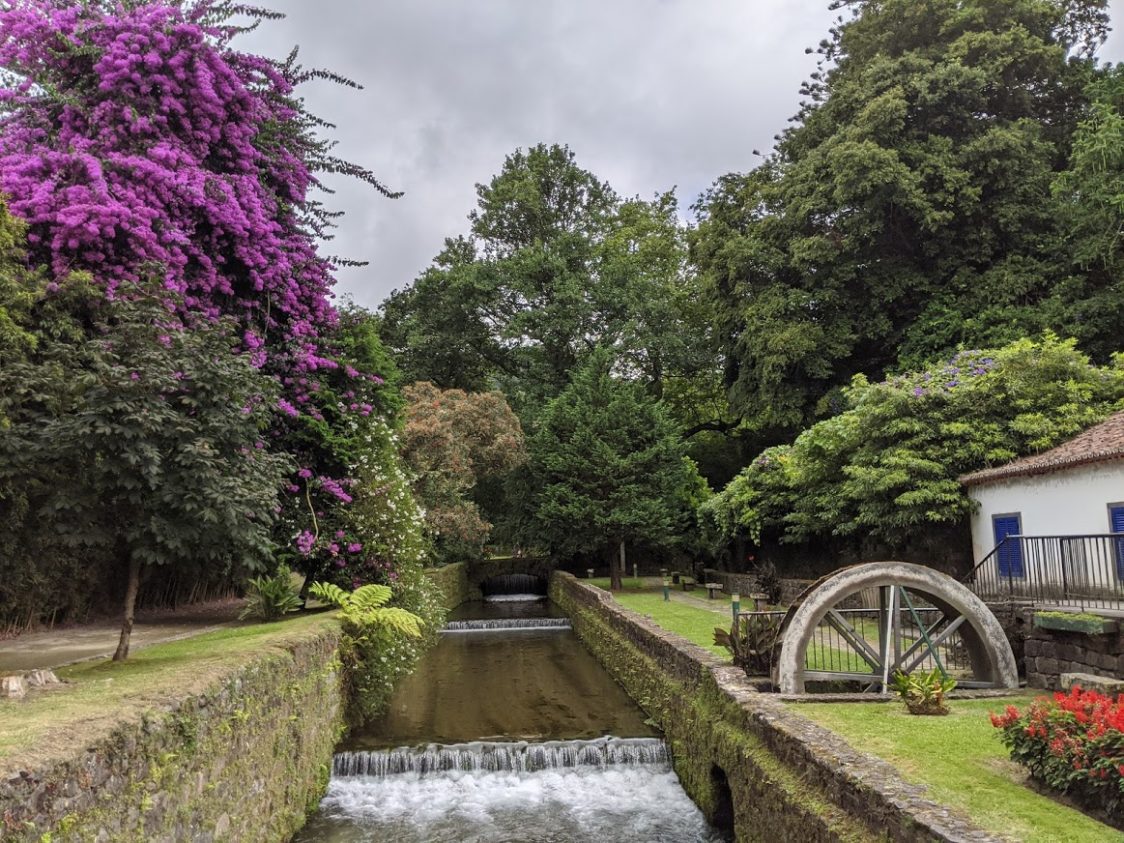
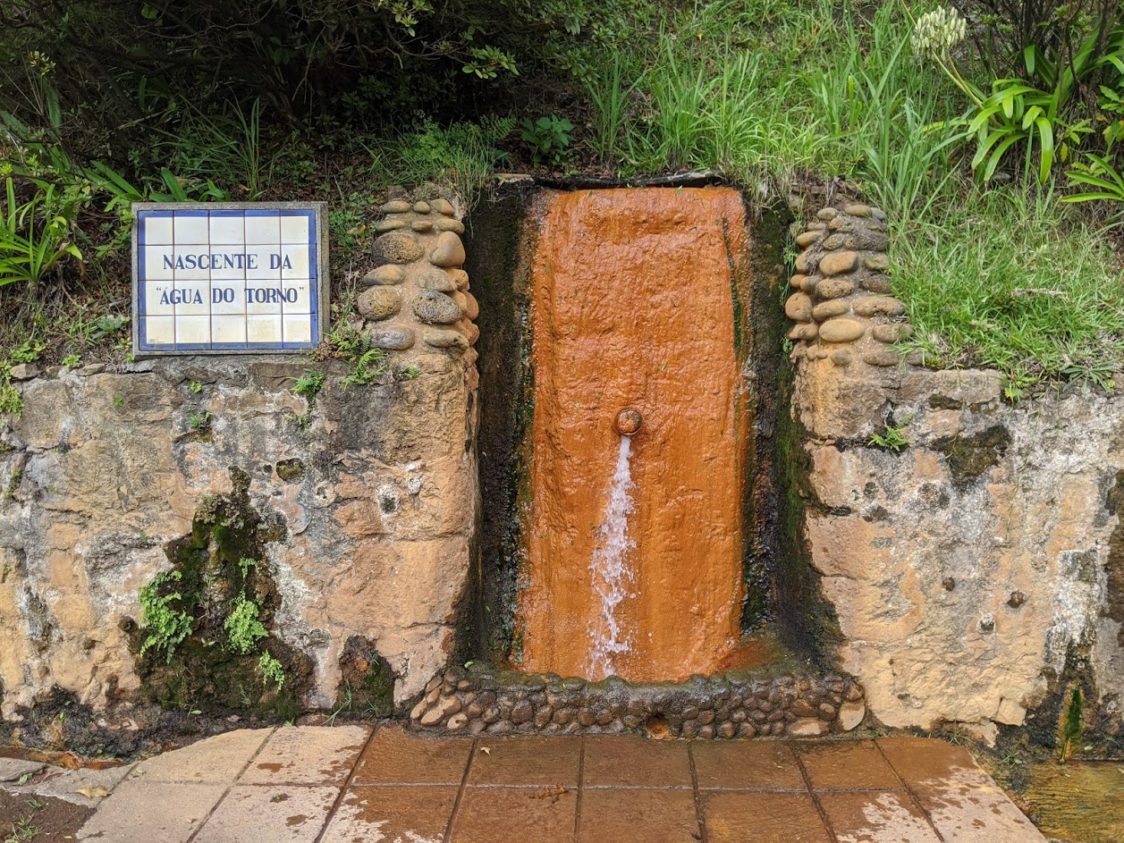
Poça da Dona Beija Hot Springs l 37°46'09.2" N, 25°19'09.0" W
From the moment we passed through the kiosk and headed down the wooden pathway of the Poça da Dona Beija Hot Springs in Furnas we were transported into a verdant and magical oasis. Running the length of the property between the main pools is a freshwater stream from the nearby forest that mixes with hot, mineral rich water from the original underground cave at Lomba das Barracas.
It was love at first plunge.
Although the hot springs of Poça da Dona Beija date back to the 1900’s they have only been opened to the public since 1988. The opening was met with such popularity that the government had to close the pools in 2007 due to health, safety and environmental concerns while they developed a plan to turn the management and maintenance of the facility over to a private company.
In late 2010 the pools officially reopened with considerable upgrades and attention to the problems that plagued it under the governments management. Back in business, the Poça da Dona Beija hot springs are now considered to be one of the finest places on the island of Sao Miguel to enjoy the therapeutic benefits of a good soak.
The intimate, jungle-like setting immediately takes you to another place as there is little to distract you from the clear blue sky, lush foliage, colorful flowers and the sound of rushing water. With steam constantly rising into the air and a mystical, almost zen-like quality to the surroundings, you could easily picture yourself in the Onsen region of Japan…minus the famous Snow Monkeys of course!
Each of our numerous visits to Poça da Dona Beija were nothing short of amazing. Being that the springs were a short 15 minute drive from where we were living we would arrive first thing in the morning during the week and, on most visits, found ourselves the only guests in the pools. We experienced bathing alone on bright spring days, chilly winter mornings and during the islands numerous rain storms, all of which were equally enriching.
Three of the pools have waterfalls of various intensities with each possessing their own unique characteristics. Some of the falls are intense enough to deliver a powerful back, neck and shoulder massage while the largest of the pools has a “curtain” fall that runs the entire width of the pool. There is a bench behind the curtain and once inside the temperature increases dramatically, becoming a hot and steamy open-air sauna. At times the sound of the curtain fall is almost musical.
For a more peaceful experience the Thermae Socializing pool has no waterfall which offers a quieter, more contemplative soak while providing a panoramic view of the other pools, the garden and the pumpkin colored, iron rich stream. Four of the five pools have a water temperature of 39ºC (102ºF) with the fifth pool being a bit cooler at 25ºC (77ºF) for those who enjoy a slightly more refreshing bathing experience.
There are several other natural hot springs throughout the island of Sao Miguel yet Poça da Dona Beija is, by far, one of the more enchanting and intimate springs to visit. It is yet another fitting example of why Furnas is regarded as the Hydropolis of the World.
Visit Poça da Dona Beija hot springs for directions, hours of operation, rules and regulations.
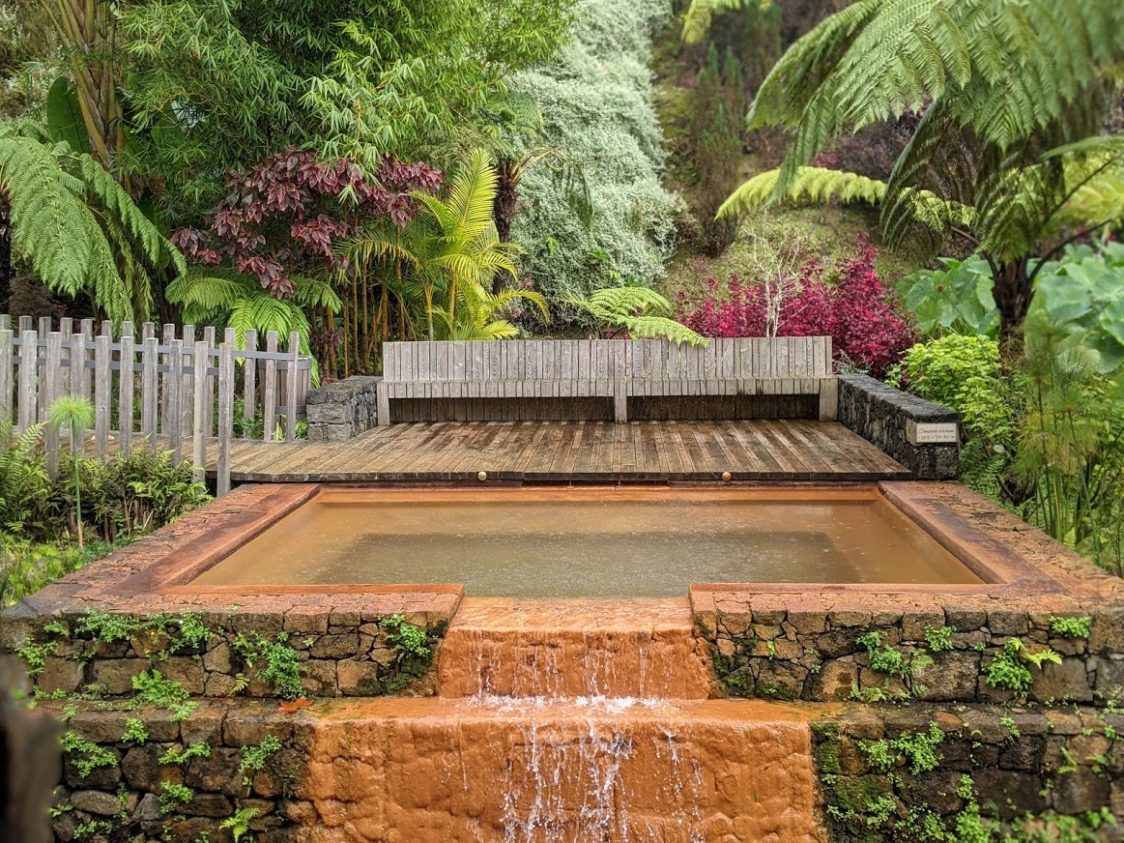
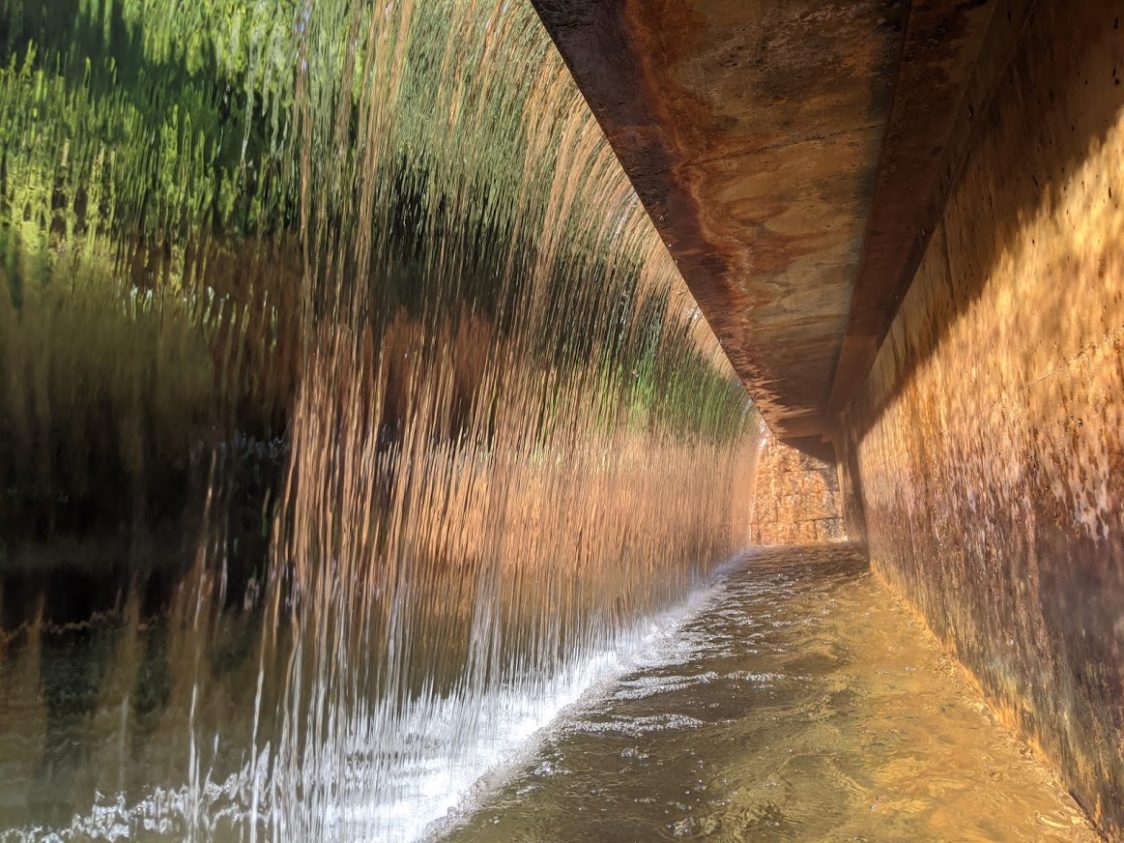
Grena Parque Waterfalls l 37.7557° N, 25.3341° W
Grena Parque is located on the north shore of Furnas Lake and possesses a storied and sometimes troubled history.
Beginning with the purchase of the property in 1832 by a wealthy Englishman, through multiple changes of ownership to complete abandonment, the park fell into disarray eventually becoming a massive garbage dump. After several years and considerable internal bureaucracy the Portuguese government turned the property over to the Azorean Autonomous Region and a dedicated year-long effort to clean up the severely degraded park began.
With its grand reopening in 2019 Grena Parque is once again another jewel in the crown of the numerous natural green spaces on the island of Sao Miguel.
Our first visit to Grena came in the fall several days after an earth shattering storm struck the island. Having never been to the park we did not know what to expect. Upon arriving we were shocked to see massive amounts of destruction, from whole hillsides of tress swept downriver from the upper falls to boulders the size of small cars tossed about the canyons like a messy child’s playroom.
We had some inkling of the damage that the storm had wrought while walking around Furnas Lake on our way to the park. Logs and debris had piled up on the south shore of the lake indicating the northerly direction of the storm. While certainly a clue, the amount of debris gave no indication of the real damage done inside the park itself.
We spent two hours zig zagging our way through the multiple trails, resting at the strategically placed overlooks and searching for the numerous waterfalls. That is where we began to witness the totality of the damage that the storm had wreaked. Several small bridges had been swept away and the one bridge that we could cross had been quickly rebuilt so as to allow visitors access to the various trails and falls.
In spite of the damage from the storm the park was absolutely beautiful. The 18 hectares (45 acres) are covered in lush, dense vegetation with local as well as invasive species. There are Japanese Cedars by the thousands, groves of bamboo, yellow Ginger-Lilly and tree ferns several stories tall. All of this greenery is offset by colorful camellias, azaleas and hydrangeas while brilliant green moss and mushrooms line the forest floor like a designer carpet.
Complimenting the jungle-like vegetation are numerous streams and waterfalls, made even more prominent due to the storm. Waterfalls were swollen beyond capacity and ponds were turned into small lakes. Water was literally seeping from the hillsides in delicate string-of-pearl like falls. The storm was so forceful that one pool of water was completely moved from below the upper falls and pushed underground. You had to see it to believe it.
Before leaving the park we decided to tackle a set of wooden stairs that would take us to the tallest set of falls in the park. At the base there was a sign warning that the stairs had a “high difficulty index” and that climbers needed to be in good physical condition to endure the calf burning 630 stairs. Up we went!
Forty-five minutes later we arrived near the base of the falls where the final leg was closed due to the dangerous condition of the trail. Immense damage to the cliffs on either side of the river beneath the falls was clearly visible with trees, bamboo and boulders strewn about everywhere. It was there that the full weight of the storm, with its immense volume of water, became apparent to us. Looking downstream it was easy to see how all of the debris that we had seen on the south shore of the lake got there.
Just as dozens of dedicated park workers spent a full year cleaning up and restoring the park back to its full glory in 2018 they will once again need to muster their collective efforts to bring the trails, river banks and bridges back to full working condition.
More than likely their work will be complete just as our aching calves return to normal!
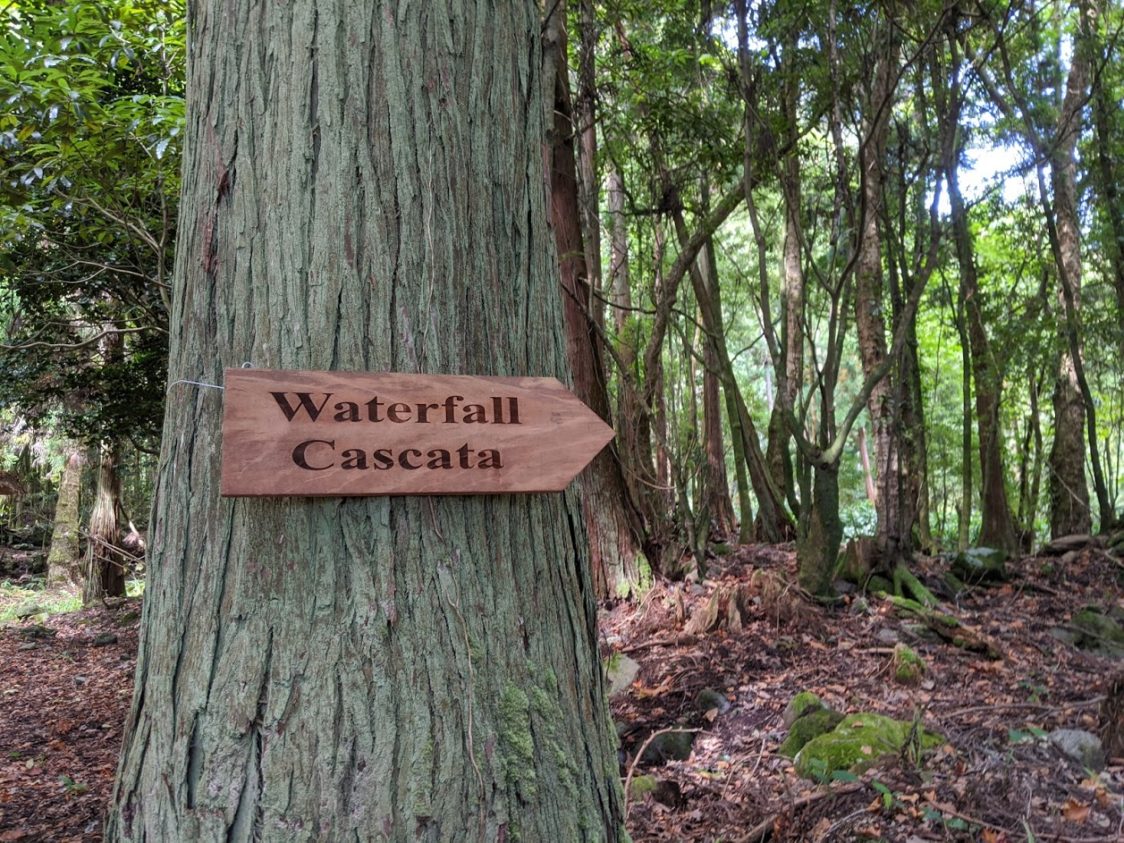
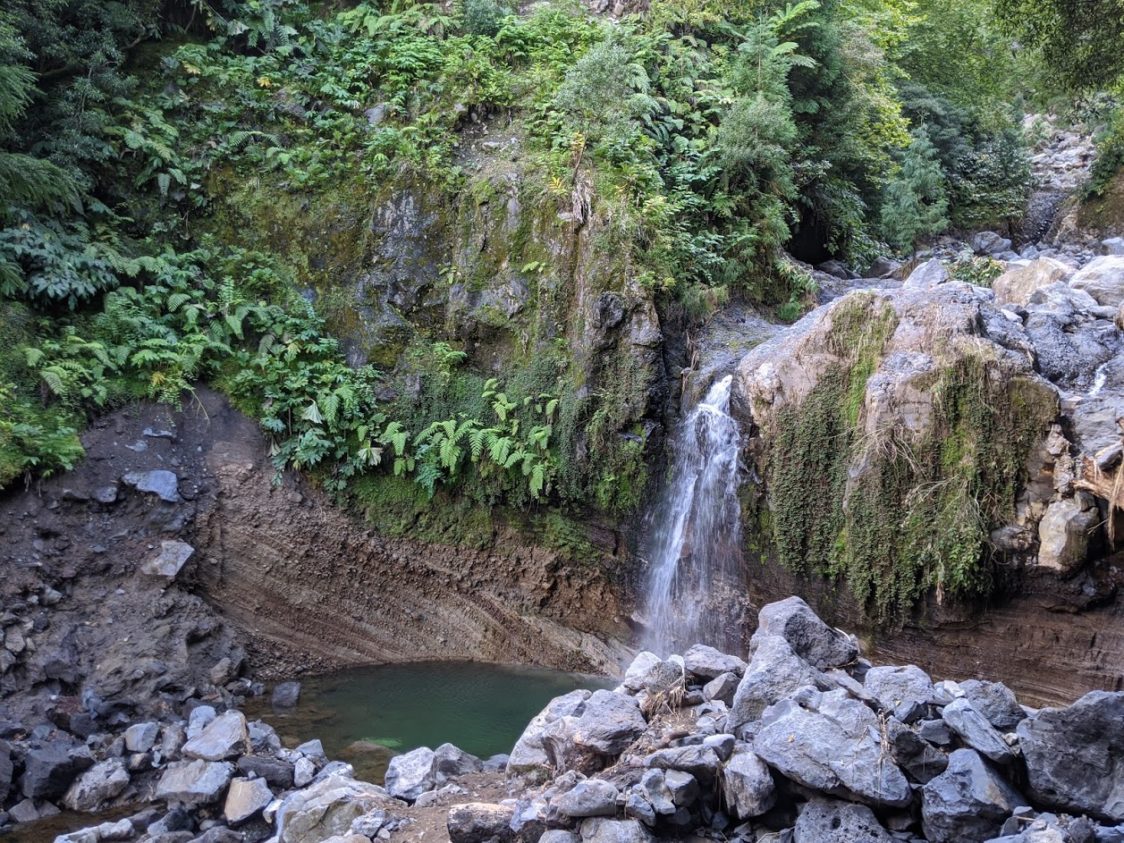
Islet of Vila Franca do Campo l 37.7000° N, 25.4500° W
The island of Sao Miguel offers many opportunities to get on the water from sailing, ocean kayaking and windsurfing on Furnas Lake to surfing the on the north shore. There are also numerous whale watching tours along with deep sea fishing excursions. For those who prefer to spend their time underwater there are several dive outfitters and plenty of good snorkeling available. No matter what your passion is the island has a water sport or activity for everyone.
Our time spent enjoying the water took place over two separate excursions. The first of which was a local outfitter from Vila Franca do Campo named Cruzeiro do Ilhéu which ferries visitors out to the Islet of Vila Franco do Campo. It is a short 15 minute ride to this beautiful natural attraction formed by an ancient underwater volcano.
Popular with tourists as well as locals the Islet of Vila Franco do Campo is a great place to swim, snorkel, dive or simply sunbathe with friends. Resting in the interior of the crater is an almost perfect circular lake which is linked to the sea by a narrow channel. No boats are allowed inside the crater so the water is clear, calm and warm most of the time.
Offloading from the boat we were promptly warned by the lifeguards that there was a colony of Portuguese man o’ war on the far shore. Often mistaken for jellyfish this particular species of marine animals can deliver an extremely painful sting, landing the unwitting human target in the hospital. Needless to say we wisely stuck to the shore and the rocky lava outcroppings while enjoying our early afternoon stay.
On our second watery outing we chose to hit the water with Azor Sea Adventures, a private touring, diving and fishing operation run by an affable local name Felipe. A true man-of-the-sea Felipe was extremely knowledgeable about both the geology and biology of the island and the sea. As we circumnavigated the island he regaled us with stories about cliff divers, lost explorers and the history of the island itself.
After our once-around-the-island was complete Felipe took us to one of his favorite snorkel spots. It was a quiet bay that had volcanic gases bubbling up from the ocean floor. The spot was no more than 20 feet deep making it easy (for Felipe!) to dive down to gather a handful of very hot sand. With our masks on we could see thousands of bubbles floating gracefully from the ocean floor. It was truly magical!
On our return trip back to the marina Felipe gave us a lesson in how all of the electronic gadgets work aboard his boat. Along with being a man-of-the-sea he was also a technology and gadget geek!
Visit the links below for the tour operators included in the story. No matter which adventure you choose it will be well worth the time.
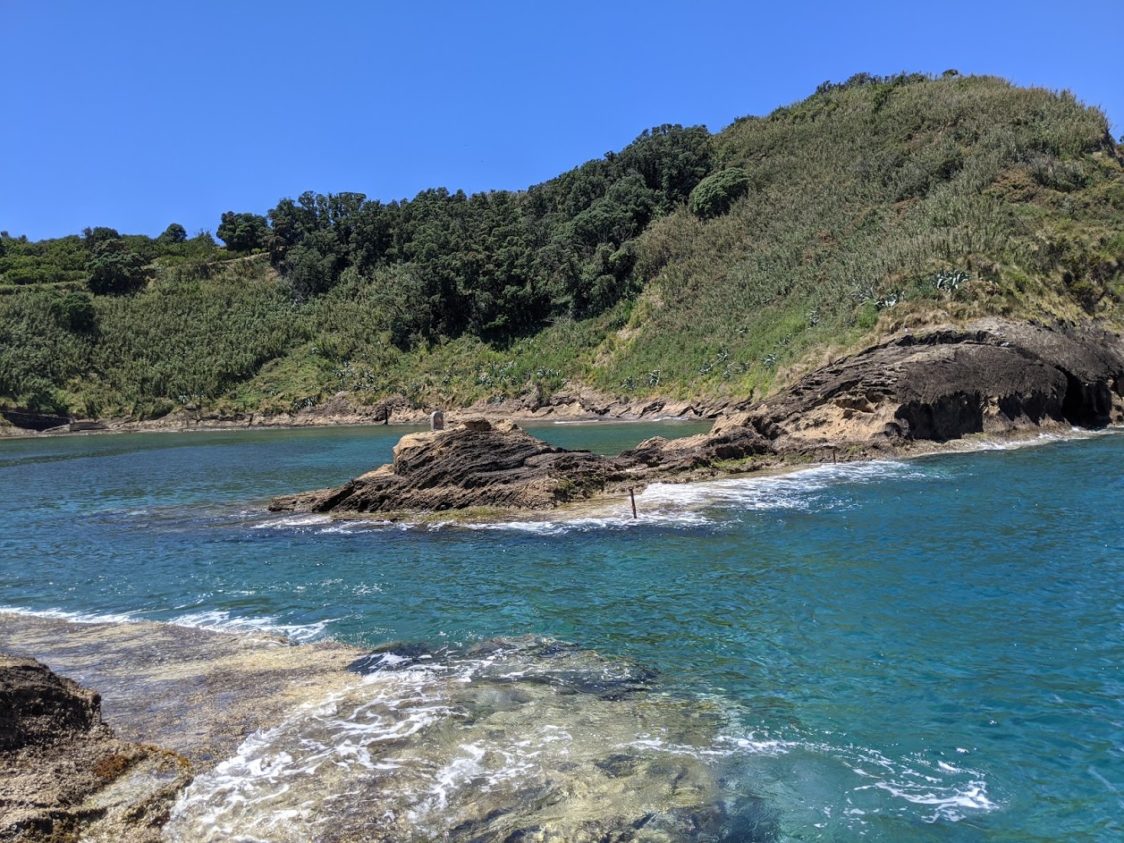
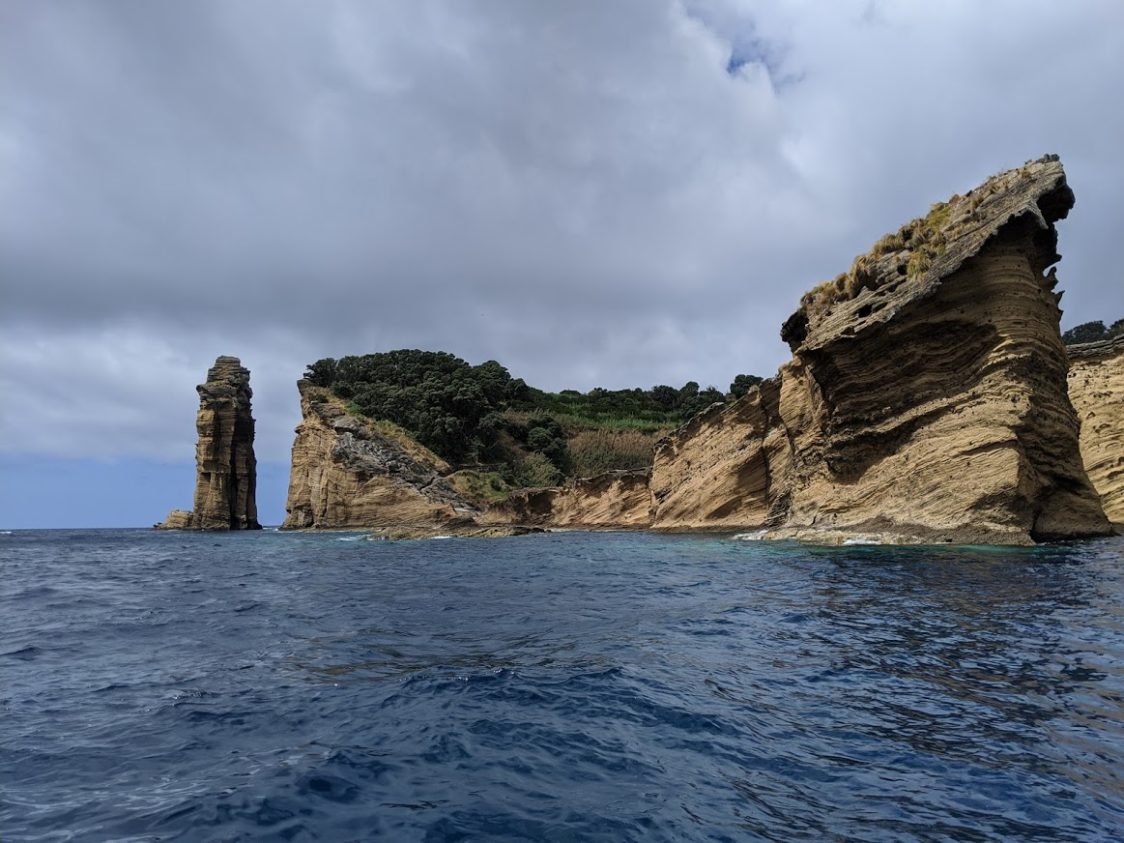
Santa Barbara Beach l 37.8210° N, 25.5148° W
There are several places to surf on the island of Sao Miguel, yet between the months of June – October the action is along the North Shore on Santa Barbara beach.
At one kilometer long and very wide, the beach rests at the base of some tall, windswept bluffs. Not only is it one of the more popular beaches on the island to surf and bodyboard but it is also a favorite among locals and tourists alike to simply walk and enjoy the ocean view.
On one of our many visits (it’s one of our favorite beaches) we watched pee-wees practicing their moves on skateboards, teenagers with tousled hair fresh out of the water and more advanced shredders showing the bystanders on the beach how its done. As always, there is the typical gaggle of surf dudes chilling in the parking lot or on the beach watching and waiting for the next perfect set.
The Azores Surf Center, run by the enthusiastic couple of Josie and Ricardo along with their team, has been teaching surfing for over nine years. Their friendly and personal manner of working with students of all ages and skill levels is a major contributor to the thriving surf culture on the island. Their constant presence during the season along with a team of full-time lifeguards makes surfing at Santa Barbara a very safe and enjoyable experience.
Another popular activity on Santa Barbara beach is paragliding. With its tall bluffs and generally good wind conditions it is a mecca for paragliders. There is plenty of space on top of the bluffs, or the beach, to offload gear and suit up complimented by safe landing options, making this an ideal spot that attracts gliders from around the world.
Santa Barbara beach also has a great infrastructure with bathrooms, showers and a nice outdoor restaurant called the TukáTulá Bar. It’s a great place to have a beer and a sandwich or some fresh local seafood while sitting in the sun and taking in the beach vibe.
Although the pandemic put a dent in the high energy that normally exists on Santa Barbara beach it still remains a very lively spot. During most of our visits, there were usually enough people to feel the excitement that comes from watching people doing what they love.
Even if they were simply waiting and watching for the next perfect set!
